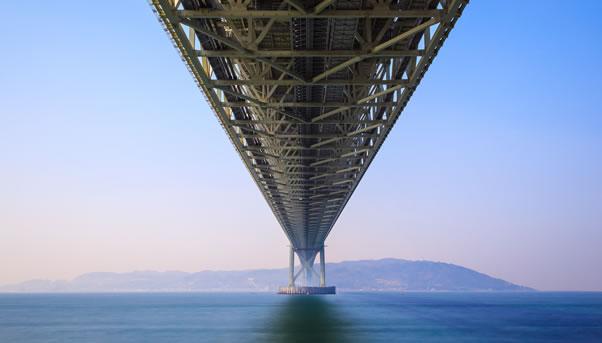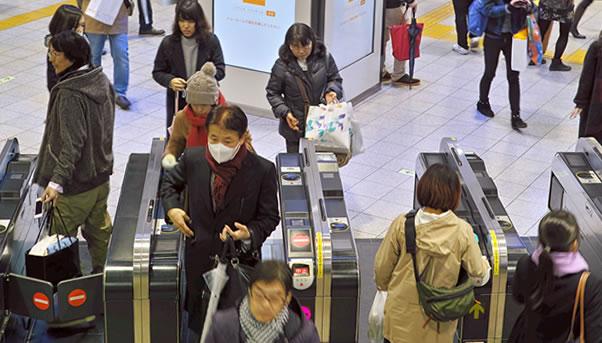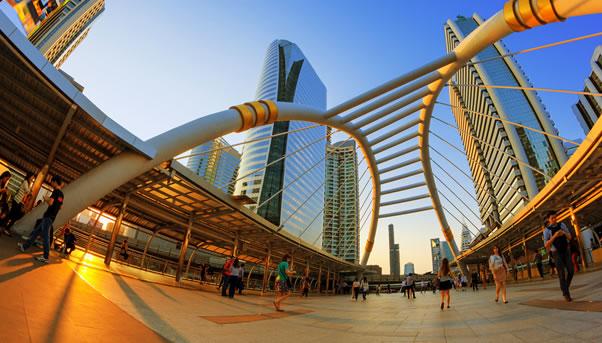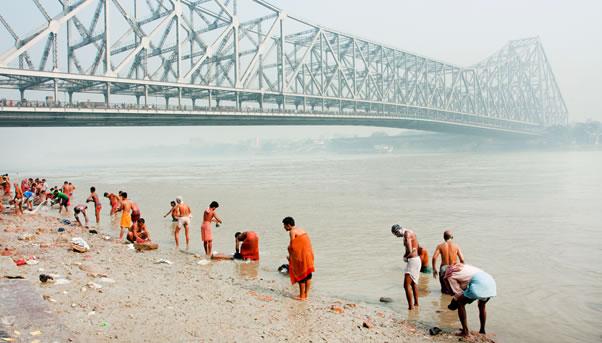
For as long as we can tell, infrastructures have been the lifeblood of strong economies and societies. Noah could sail off on the Ark because his animals boarded from what one assumes was a well-built quay. Rome would not have ruled Europe without the aqueducts, which at the height of the Empire provided over a cubic meter of clean water per day per inhabitant, which is a lot even by modern standards. Fast-forwarding to the First Industrial Revolution, not by chance it took place in those very countries that possessed adequate electricity and transport networks.
Globalisation, if anything, reinforces this association. Physical and digital infrastructure systems interact ever more closely with one another, linking supply chains and people as well as territories. Roads, sanitation, energy, ports, airports and other communications systems create efficiencies and spur productivity, but greater interdependencies heighten vulnerability, security concerns and environmental risks, too. Infrastructure investments have proven major complements to industrialization and agricultural, rural and urban development efforts. Clean water – fundamental to human health and welfare — relies on infrastructure for storage, transport and delivery in a manner that is efficient, reduces household labour, and remains clean. Sanitation, through interventions such as clinic incinerators and improved latrines, plays an important role in preventing infectious diseases. In addition, infrastructure priorities change over time to reflect factors such as ageing populations and migration.
Infrastructure and global development
Nonetheless, worldwide infrastructure coverage is far from universal and indeed satisfactory. 2015 is a good moment to take stock of the progress made, as the Millennium Development Goals (MDGs) that the global community adopted in 2000 come to an end. In general terms, the 15-year effort has produced the most successful anti-poverty movement in history. Most of the eight aspirational MDGs have been met, although major shortfalls remain.
No MDG was specifically about infrastructure, but all in all results have been pretty impressive. Worldwide 2.1 billion people have gained access to improved sanitation. About 2.6 billion people have gained access to improved drinking water since 1990. In 2015, more than 90% of the global population is using an improved drinking water source, compared to around three-quarters in 1990. The proportion of urban population living in slums in the developing regions fell from approximately 39.4% in 2000 to 29.7% in 2014 – which of course remains an unacceptably high figure.

In these 15 years a consensus has grown that structural transformation and socio-economic development is terrifically more effective when accompanied by planned infrastructure development. The MDG story also proves that, with targeted interventions, sound strategies, adequate resources and political will, the global community can raise even to the highest challenges.
The MDG acquis served as the jumping off point for the new Sustainable Development Agenda adopted the United Nations in September 2015 under the leadership of Secretary-General Ban Ki-moon. Moving forward the options include recognition of strategic infrastructure (including gateways, hubs and key connections) in national policy frameworks and adoption of comprehensive measures to strengthen approaches and support infrastructure development.
From MDGs to SDGs – More than a Change in Letters
The Sustainable Development Goals (SDGs) commit the global community to the three Ps of People (ending poverty and hunger and ensuring that all human beings can fulfil their potential in dignity and equality and in a healthy environment), Planet (protecting it from degradation so that it can support the needs of the present and future generations), and Prosperity (enjoying prosperous and fulfilling lives).
The SDGs include a specific Goal, the ninth, “to build resilient infrastructure”, while sub-goal 9.1 refers to the “develop[ment of] quality, reliable, sustainable and resilient infrastructure, including regional and trans-border infrastructure, to support economic development and human well-being, with a focus on affordable and equitable access for all”. In addition there is a call to upgrade infrastructure and retrofit industries by 2030 to make them sustainable (9.4) and to facilitate sustainable and resilient infrastructure development in developing countries through enhanced financial, technological and technical support to African countries, least developed countries, landlocked developing countries and small island developing States (9.a).
Infrastructure embodies an economic sector in its own right, commanding huge investment in capital equipment and employment, as well as procurement services, financing and so on. Whether water, energy, transport or communications, now as in the past, infrastructure demands constant and heavy investment. Despite the global crisis, its long aftermath, and discussions about “secular stagnation”, it is reasonable to expect the world economy to grow by some 3% per annum to 2030 and trade much faster. This translates into huge investment needs and the orders of magnitude are mind-boggling: an average of 3.5% of world GDP according to the OECD Infrastructure Project to 2030 (that does not cover ports, airports and storage facilities), of which 1% in electricity generation and other energy-related investments.

Better Policies Will Be Needed
With competition for finance (especially from social expenditures) putting budgets under pressure, how can we afford to upkeep our systems, let alone invest in new ones? The only possibility is for public and private investors to pool their efforts.
The inadequate level of infrastructure investment in the developing world – and beyond, indeed – does not necessarily result from a dearth of available capital. Infrastructure investment is first and foremost policy-intensive. On the one hand, the broader legal and regulatory frameworks must be enabling and capable of mitigating risk – both perceived and real. Investors demand institutional mechanisms and contract structures that can help enhance the sustainability of huge projects throughout their lifetime. This also means finding new income sources, making more and better use of user fees, creating mechanisms for securing long-term financing for infrastructures (as Canada and Switzerland have done), or exploring the possibilities offered by land value capture (such as the elaborate scheme being used to finance Copenhagen’s metro system). Another route is to promote innovative variations of traditional financing mechanisms, as it is done in North America for instance by using revenue-based bonds.
On the other hand, a high level of commitment among key public and private actors is necessary to drive well-designed sector plans and key catalytic projects and pave the way for downstream project preparation work. Private investment must yield a return, and several governments could do far more to improve the business attractiveness of their regulatory environment to draw in private capital, for instance by promoting more competition in procurement and operation. Setting clear standards in terms of environmental and security challenges can bring concrete results, while incentives will have to be re-oriented so that public and private investors and consumers find attractive allocating resources into goods and activities that are environmentally sound and lower their energy and resource use.

And there is ample scope in education and training institutions for greater efforts to develop the interdisciplinary skills and knowledge that will be required to tackle the opportunities and problems raised by infrastructures in the years ahead. Some of these initiatives will require patience, skill and inventiveness to implement, others may be more straightforward. What is clear is that policymakers must act, as waiting will not make the infrastructure challenge any easier.
At the broadest level there is a need to reinforce government ‘commitment technologies’ that diminish risks posed by long-term investment horizons and mitigate the complexities of project planning and of co-ordinating multiple central and local stakeholders. Such solutions would help tackle the one of several ‘communication gaps’, whereby global capital markets continue to view infrastructure in developing countries as highly risky. This is exacerbated by the short-sightedness of credit rating agencies (which in Africa in particular often provide an overly negative picture of investment opportunities) and by the fact that individual projects cannot be rated higher than the sovereign rating of the host country. Procurement processes often time take much longer than it is reasonable – in Southern Africa routinely five years whereas they should really be concluded within 24 months. According to the African Development Bank, reaching financial close for projects can take seven to ten years, in addition to seven years for construction. This is a considerable brake on investor attractiveness.
Red tape and complex processes are not the only reason for lengthy upstream processes. There is also a dearth of capacity in the public sector for dealing with the complexity of project preparation, negotiation and implementation. These capacity gaps call for active training and capacity-building efforts, as well as for mechanisms to exchange best practices.
Policy coherence is another crucial keyword. Inclusiveness is essential to sustainable economic growth. Hence the imperative of pursuing decent work for all women and men, including young people, when investing in infrastructures. On building sites, labour rights and safe and secure working environments for all and a permanent social dialogue need to be promoted and the worst forms of child labour eliminated. This is of course in the interest of those best-run companies that can turn responsible business conduct into a source of competitive advantage.
In sum, now more than ever, infrastructure is a vital means for ensuring the delivery of goods and services that promote growth and prosperity and contribute to well-being – and the preservation of our only and sole environment. Infrastructures are major markets with strong global networks, and improving international co-operation would give policymakers the support and confidence they need to move forward. All good planning, financing and management relies on sound basic tools, in which information, data collection, research and analysis are vital.

